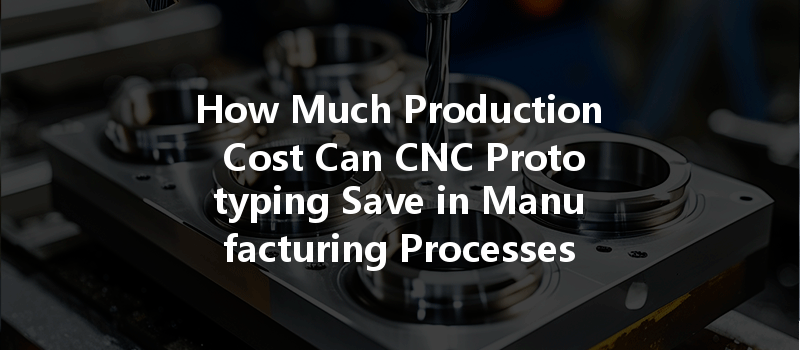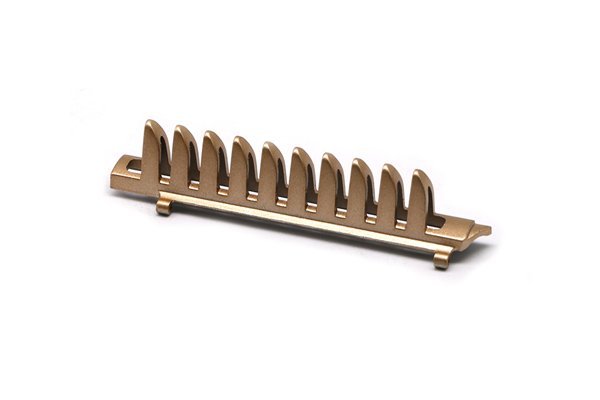Did you know that manufacturers using CNC prototyping can save up to 50% in production costs compared to traditional methods? With the rapid advancements in technology, manufacturers are constantly seeking ways to optimize their operations, reduce waste, and enhance efficiency. CNC (Computer Numerical Control) prototyping is emerging as a groundbreaking technology that transforms the landscape of manufacturing, allowing businesses to streamline their processes while saving costs. But how significant are these cost savings, and what are the underlying factors that contribute to them?
In this comprehensive blog, we will delve into the nuances of CNC prototyping, exploring its benefits, applications, and the myriad ways it can optimize manufacturing costs. By addressing common challenges and providing insightful solutions, this blog aims to present a 360-degree view of how CNC prototyping can revolutionize your production processes.
Understanding CNC Prototyping
CNC prototyping employs computerized technology to create prototypes efficiently and accurately by controlling machine tools via a computer. This technology eliminates the uncertainty often associated with manual machining, resulting in high precision and consistency across manufacturing runs.
Key Components of CNC Prototyping
Before diving into the cost-saving aspects, let’s break down the central elements of CNC prototyping:
By integrating these components efficiently, manufacturers can enhance productivity and accuracy.
The Cost-Saving Potential of CNC Prototyping
One of the most significant advantages of CNC prototyping is its capacity to minimize material waste. Traditional fabrication methods often lead to excess material use, resulting in higher expenditures. CNC machines, in contrast, follow precise designs, ensuring that only the requisite amount of material is utilized.
In today’s fast-paced market, time is money. CNC prototyping allows manufacturers to create prototypes quickly, often within days rather than weeks. This speed accelerates the time-to-market and leads to increased profitability.
Quality inconsistencies can lead to costly rework and delays. CNC machines excel in producing identical replicas of a prototype, ensuring high precision and quality consistency. This minimizes the risk of errors and enhances customer satisfaction.
CNC prototyping allows manufacturers to create custom designs without incurring exorbitant costs. Traditional methods may charge extra for custom tooling or manufacturing processes, but CNC can adapt quickly to design changes without significant added expense.
CNC processes can be automated to a significant degree, reducing the need for skilled labor for repetitive tasks. This reduces labor costs while allowing existing skilled labor to focus on higher-level tasks.
Additional Factors Contributing to Cost Savings

Energy Efficiency
CNC machinery is often more energy-efficient compared to traditional machines, further contributing to cost savings in production. Modern CNC machines consume less power while maintaining high performance levels.
Maintenance and Downtime
CNC machines typically require less maintenance than their traditional counterparts. With fewer breakdowns thanks to advanced technology, manufacturers face fewer interruptions, saving on repair costs and lost production time.
Addressing Challenges in CNC Prototyping
While CNC prototyping presents numerous advantages, it is essential to address some challenges manufacturers may face when implementing this technology.
Initial Investment Costs
The upfront costs associated with purchasing and setting up CNC machinery can be substantial. However, these costs should be viewed as a long-term investment rather than a short-term expense.
Skill Acquisition
Transitioning to CNC technology requires training staff, which may incur short-term costs. However, investing in employee training yields long-term benefits, such as increased productivity and reduced errors.
Selecting the Right Software and Machinery
Choosing the appropriate software and equipment is pivotal. Manufacturers must evaluate their unique needs and budgets to select the right solutions that will maximize their production potential.
Case Study: Successful Implementation of CNC Prototyping
To illustrate the practical benefits, let’s consider a hypothetical case study involving a manufacturer of automotive parts.
Background
A mid-sized automotive parts manufacturer experienced consistent challenges with lead times and product quality. Their manual processes were time-consuming and led to significant waste and defects.
Implementation of CNC Prototyping
The company invested in CNC machinery and training for its employees. They began the transformation by switching to prototyping using CNC technology.
Results
Within six months, the company reported:
CNC prototyping represents a paradigm shift in manufacturing processes, offering substantial cost savings through material efficiency, reduced lead times, consistent quality, and lowered labor costs. Although the initial investment and transition may pose challenges, the long-term benefits far outweigh the upfront costs.
In today’s competitive landscape, embracing CNC technology will not only enhance operational efficiency but also provide a strategic advantage. Businesses looking to optimize their production processes should consider integrating CNC prototyping into their operations to reap the financial and operational rewards.
As we move forward in this technologically advanced era, understanding and adapting to innovations like CNC prototyping is not just beneficial—it’s essential for sustained growth and competitiveness in the manufacturing industry. Remember, the key to thriving in the modern landscape is not only about adhering to old practices but also about being willing to innovate and adapt. So take that step today, and explore how CNC prototyping can transform your manufacturing operations!






